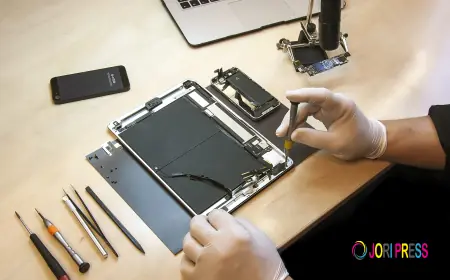Where to Place Your Home Security Camera in Apartments vs. Houses
Where to place your home security camera matters more than ever whether you live in an apartment or a house. Placement strategies vary considerably depending on your space, access points, and privacy boundaries.Where to place your home security camera in an apartment often means focusing on indoor entry points and common areas. Where to place your home security camera in a house allows for both indoor and outdoor monitoring. And where to place your home security camera in either setting can greatly improve both safety and detection.
At Cam Security Surveillance LLC, we tailor recommendations to your living situation. Whether you're renting or owning, this guide will walk you through the best places to install a home security camera, address privacy concerns, and help you achieve optimal coverage.
Understanding Key Differences Between Apartment and House Setups
When deciding where to place your home security camera, your setup is shaped by different constraints:
-
Apartments often limit outdoor installation and require extra attention to tenant and neighbor boundaries.
-
Houses offer more flexibility with front, back, and side yards but pose additional blind‑spot challenges in open spaces.
At Cam Security Surveillance LLC, we help you customize Home Security Camera Installation plans whether you're navigating condominium rules or installing across a sprawling yard.
Apartment Strategies: Focus on Indoor Security
Living Room and Hallway Cameras
For many apartments, the best places to install a home security camera are entryways, hallways, and common rooms:
-
Near front doors to monitor arrivals and exits.
-
In living areas where packages arrive or visitors gather.
-
Track pet behavior or children’s activities with indoor cameras angled for visibility.
Balcony or Patio Considerations
If your apartment has a balcony or patio and you're allowed to install outdoors, follow building rules and privacy laws. Focus your camera view inward toward your unit—not outward into shared spaces.
Ideal Height for Home Security Camera Placement
In apartments, the ideal height tends to be lower:
-
Mount indoor cameras at 7–8 feet to capture head and torso level.
-
Avoid placement high enough that it points at neighboring units or common hallways.
Getting angles right is easier with help from professional security camera installation near me, especially if your building has strict rules.
House Strategies: Covering Both Indoors and Outdoors
Outdoor Placement: Front Door, Driveway, Backyard
Houses allow for broader outdoor coverage. Think about where to position outdoor security cameras:
-
Front porch and main entrance: capture faces and package drop zones.
-
Driveway to monitor vehicles and walkway approaches.
-
Backyard or side yard to keep tabs on hidden entry points or garden access.
Ideal Height for Outdoor Cameras
Place outdoor cameras at 9–10 feet, which serves dual purposes: enhanced field of view and less chance of tampering. This height also helps avoid glare and offers coverage that includes faces and body profiles.
Indoor Placement for Houses
Don’t ignore internal zones. Great indoor placements include:
-
Hallways connecting floors or rooms.
-
Living or family rooms where activity is frequent.
-
Room entries or staircases.
Together, these interior angles reinforce the external systems and guard against blind spots.
Avoiding Blind Spots in Any Setting
Knowing where to place security cameras to avoid blind spots can make or break your security coverage.
In apartments, blocking hallways or clutter can create unseen zones. Use corner-mounted cameras for broad coverage and avoid angling toward windows (to reduce glare).
In houses, large yards, side paths, and garage entry points often harbor gaps. Combining indoor and outdoor angles helps ensure every approach is seen.
At Cam Security Surveillance LLC, we use layout reviews to identify blind spots and advise supplemental coverage where needed.
Combining DIY with Professional Touch
Choosing professional security camera installation near me can benefit both apartment and house users:
DIY Advantages:
-
Cost-effective for small setups.
-
Convenient for renters or simple indoor systems.
DIY Limitations:
-
Risk of blind spots or incorrect angles.
-
Challenges with securing outdoor units or running cables discreetly.
Professional Benefits:
-
Expertise in optimal camera height and angle.
-
Proper labeling of common areas.
-
Compliance with building rules or HOA regulations.
For Home Security Camera Installation, Cam Security Surveillance LLC offers both guided DIY advice and full-service support to match your living situation.
Practical Tips: Apartment vs. House Comparison
|
Feature |
Apartment Placement Tips |
House Placement Tips |
|
Camera Locations |
Front door, living room, balcony (if allowed) |
Front/back doors, driveway, backyard, hallways |
|
Ideal Height |
~7–8 feet indoors |
9–10 feet outdoors; 7–8 feet indoors |
|
Blind‑spot Solutions |
Corner mounting; wide-angle indoor cameras |
Overlapping indoor and outdoor views, side-yard cover |
|
Outdoor Installation Constraints |
Avoid shared areas or neighbor views |
Full yard coverage permitted, mindful of neighbor lines |
|
Legal/Privacy Considerations |
Building rules; disclosure to roommates or landlord |
Respect boundaries; avoid turning camera toward neighbor’s windows |
Feature Checklist for Both Environments
For both apartments and houses, certain features are especially helpful:
-
Wide-angle lenses to reduce blind spots and cover more area.
-
Motion zones to avoid irrelevant alerts (e.g. from hallway traffic in apartments).
-
Two-way audio to communicate is especially useful in front doors or with delivery staff.
-
Night vision and ambient light sensors adapt to indoor or outdoor lighting shifts.
Ready-made systems often support sliding between indoor–outdoor zones and customizable alerts. A complete Home Security Camera Installation package from Cam Security Surveillance LLC can integrate these features seamlessly.
When to Consider Professional Setup
If you’re thinking about expanding coverage beyond basic indoor cameras, looking for perfect angles, or unsure about placement rules, a professional security camera installation near me is worth considering.
We offer:
-
In-person or virtual consultations for layout review.
-
Exact placement recommendations to comply with HOA or condo guidelines.
-
Installation services and follow-up walkthroughs to confirm coverage across spaces.
Working with Cam Security Surveillance LLC ensures your setup is both effective and compliant.
You May Also Read This:Xfinity-vs-ADT
Final Thoughts
Where to place your home security camera in apartments vs. houses differs primarily in access, space availability, and legal constraints. Knowing the best places to install a home security camera whether indoors or outdoors can vastly improve your protection and peace of mind.Ensuring the ideal height for home security camera placement, thoughtfully addressing where to position outdoor security cameras, and eliminating blind zones by understanding where to place security cameras to avoid blind spots gives you a robust, reliable system.
If you're ready to elevate your safety and coverage hether in a shared apartment or your own house contact us at Cam Security Surveillance LLC for tailored advice or full Home Security Camera Installation support.
FAQs
Can I install outdoor cameras if I live in an apartment?
Only if your building or landlord allows it. If yes, make sure your camera points inward toward your property only and respects shared or common spaces.
How many cameras do I need in an apartment vs a house?
Apartments usually need 2–3 cameras (entryway, living room, maybe balcony). Houses often require 4–6, covering exterior entry points, interior hallways, and yard areas.
Is professional installation necessary?
Not always but professional security camera installation near me can greatly reduce worries about blind spots, compliance with building rules, and achieving optimal camera placement and angle.
What's Your Reaction?
 Like
0
Like
0
 Dislike
0
Dislike
0
 Love
0
Love
0
 Funny
0
Funny
0
 Angry
0
Angry
0
 Sad
0
Sad
0
 Wow
0
Wow
0



















































